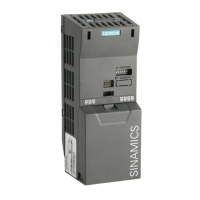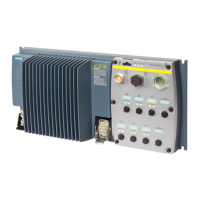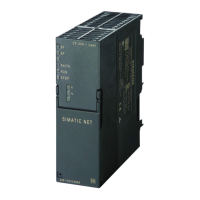Functions
8.24 Open-loop and closed-loop control
Control Units CU240S
Operating Instructions, 11/2006, A5E00766042B AA
8-171
In the steady-state condition, the field-generating current component id is proportional to the
flux Φ and the torque is proportional to the product of i
d
and i
q
.
M ~ Φ * i
q
Φ ~ i
d,stat
M ~ i
d
* i
q
When compared to V/f control, Vector control has the following advantages:
● Stable during load and setpoint changes
● Short rise times for setpoint changes (→ better control performance)
● Short rise times for load changes (→ better noise/disturbance characteristics)
● Accelerating and braking are possible with a max. adjustable torque
● The motor and motor machine are protected using the adjustable torque limit, both when
motoring and regenerating
● The motor and braking torque are controlled independently of the speed
● Full holding torque is possible at 0 speed.
These advantages are, under certain circumstances, already achieved without using speed
feedback.
The Vector control can be used both with and without speed encoder.
The following criteria provide a basis as to when a speed actual value encoder is required:
● High speed accuracy is required
● High requirements are placed on the dynamic response
– Improved control performance
– Improved immunity to disturbances.
● The torque is to be controlled over a control range greater than 1:10
● A defined and/or a changing torque has to be maintained for speeds below approx. 10 %
of the rated motor frequency P0310.
When it comes to entering a setpoint, the Vector control (see table below) is sub-divided into:
● Closed-loop speed control, and
● Closed-loop torque/current control (known as: Closed-loop torque control).
Table 8-35 Vector control versions
Vector control (closed-loop) Without encoder With encoder
Closed-loop speed control P1300 = 20 and P1501 = 0 P1300 = 21 and P1501 = 0
P1300 = 22 or P1300 = 23 or Closed-loop torque control
P1300 = 20 and P1501 = 1 P1300 = 21 and P1501 = 1
When closed-loop speed control is used, the closed-loop torque control is secondary. This
type of cascaded closed-loop control has proven itself in practice regarding commissioning
and increased transparency.

